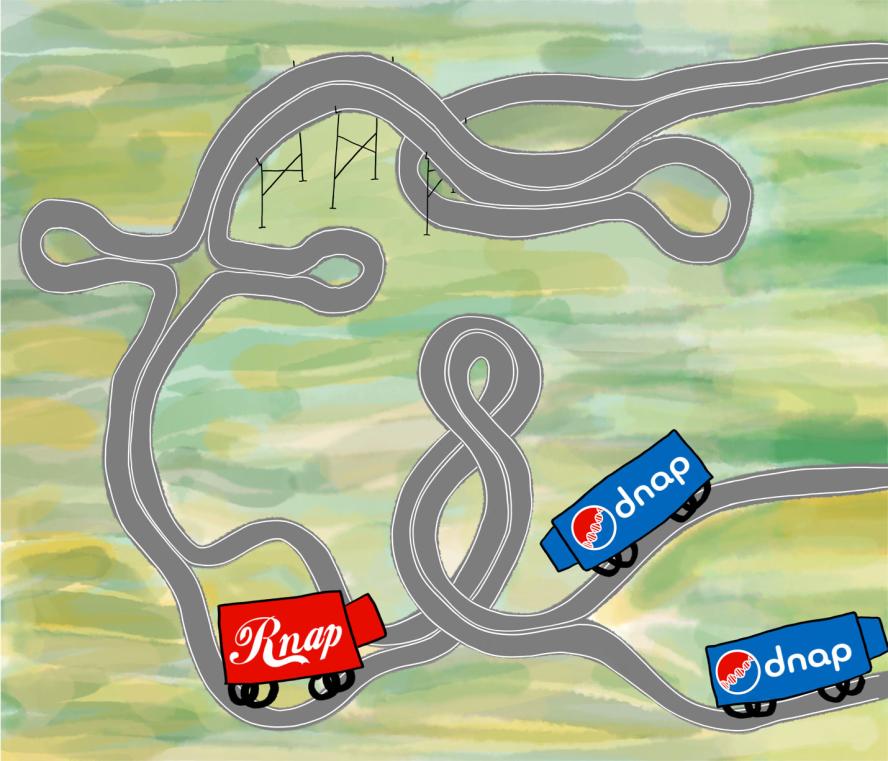Research
The Mirkin laboratory studies DNA structure and functioning with an emphasis on genome instability caused by structure-prone DNA repeats.
Alternative DNA structures
More than three decades ago, we characterized an unusual three-stranded DNA structure - H-DNA, formed by homopurine-homopyrimidine mirror repeats. Little did we know at a time that H-DNA-forming repeats would eventually be implicated in the development of several human hereditary disorders including Friedreich’s ataxia (FRDA), cerebellar ataxia with neuropathy and vestibular areflexia syndrome (CANVAS), and X-linked dystonia-parkinsonism (XPD). Recently, these repeats were also found to undergo recurrent expansions in numerous human cancers. Therefore, we’re focused on the detection of alternative DNA structures inside living cells and elucidating their biological roles in norm and disease.

Mechanisms of Repeat Expansions implicated in human disease
Uncontrollable expansions of trinucleotide repeats lead to more than fifty hereditary neurological disorders in humans including Fragile X syndrome, Huntington's disease, myotonic dystrophy, Friedreich's ataxia, and others. We have previously found that expandable DNA repeats stall replication fork progression in bacterial, yeast and mammalian cells. Subsequently, we have also developed experimental systems in yeast and cultured human cells, which have allowed us to analyze large-scale repeat expansions in vivo. Studies of genetic controls of repeat expansions in these systems have revealed that a vast majority of genes involved in this process encode protein components of the replication fork. Altogether these data led us to propose that in dividing cells, repeats are added while the replication fork is trying to escape from a “repetitive trap.”
It has also been established that repeat expansions occur in non-dividing cells, and that those somatic expansions strongly contribute to disease progression. To unravel the mechanisms of repeat instability in nondividing cells, we created an experimental system to analyze the mutability of expandable repeats during the chronological aging of quiescent yeast. It appeared that repeat expansions do indeed accumulate during chronological aging, likely in the process of DNA nick repair.
Mechanisms of Repeat Expansions implicated in human disease
Uncontrollable expansions of trinucleotide repeats lead to more than fifty hereditary neurological disorders in humans including Fragile X syndrome, Huntington's disease, myotonic dystrophy, Friedreich's ataxia, and others. We have previously found that expandable DNA repeats stall replication fork progression in bacterial, yeast and mammalian cells. Subsequently, we have also developed experimental systems in yeast and cultured human cells, which have allowed us to analyze large-scale repeat expansions in vivo. Studies of genetic controls of repeat expansions in these systems have revealed that a vast majority of genes involved in this process encode protein components of the replication fork. Altogether these data led us to propose that in dividing cells, repeats are added while the replication fork is trying to escape from a “repetitive trap.”
It has also been established that repeat expansions occur in non-dividing cells, and that those somatic expansions strongly contribute to disease progression. To unravel the mechanisms of repeat instability in nondividing cells, we created an experimental system to analyze the mutability of expandable repeats during the chronological aging of quiescent yeast. It appeared that repeat expansions do indeed accumulate during chronological aging, likely in the process of DNA nick repair.
Impact of transcription and its collisions with replication on genome instability
In transcribed regions, an RNA transcript can invade duplex DNA forming three-stranded RNA-DNA structures called R-loops. RNA transcripts can also stabilize alternative DNA structures, such as H-DNA, creating mixed structures called H-loops.
Furthermore, since transcription and replication share the same template, occasional collisions between the two machineries are inevitable and can interfere with both processes. We have demonstrated that head-on collisions with elongating RNA polymerase are much more detrimental for replication fork progression in vivo than co-directional collisions.
Thus, we study the contribution of transcription and its collisions with replication on genome instability mediated by structure-prone DNA repeats in various experimental systems.
These three directions of the Mirkin lab research are principally intertwined, building the framework for better understanding of genome structure, evolution and functioning.